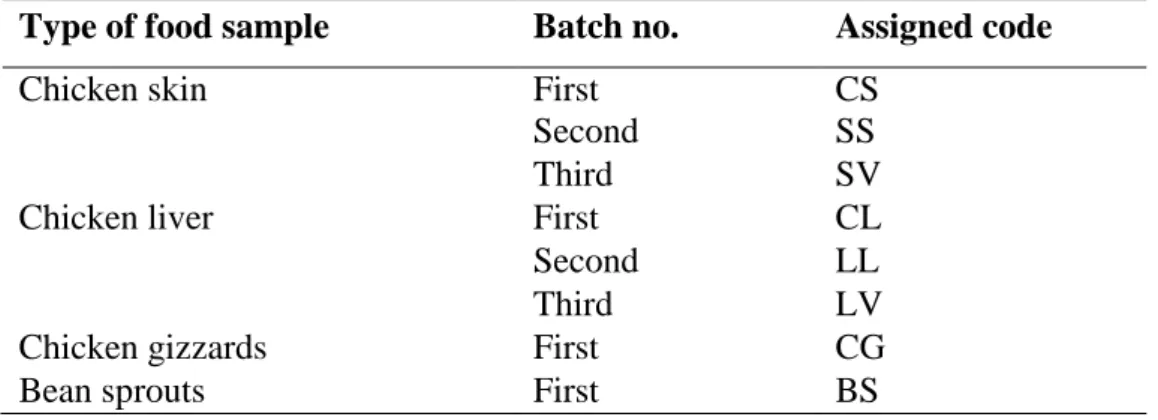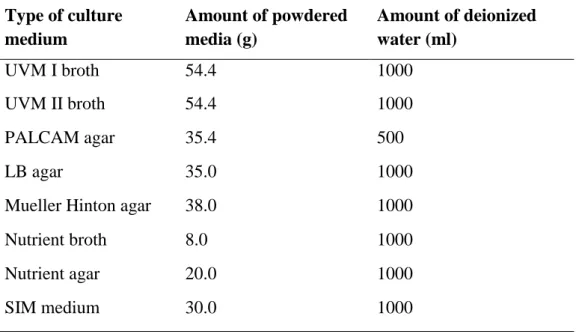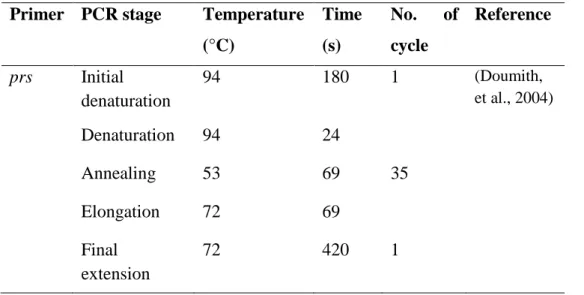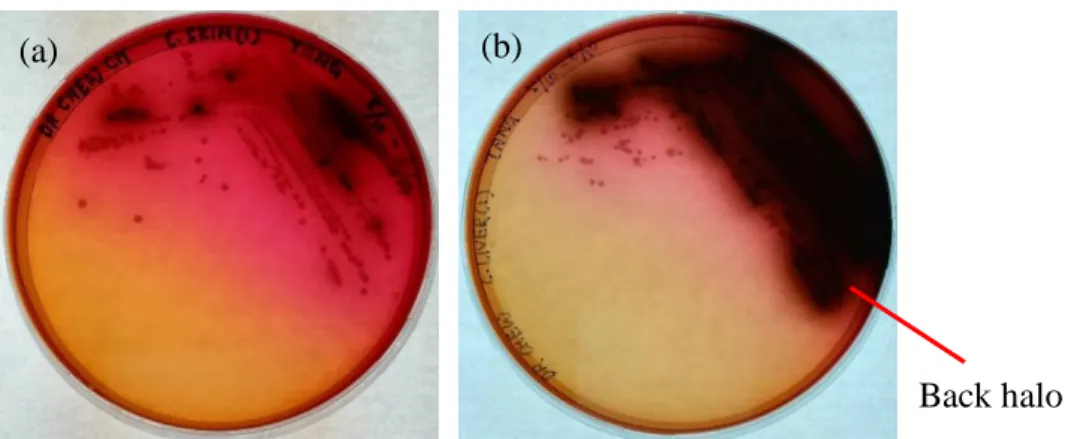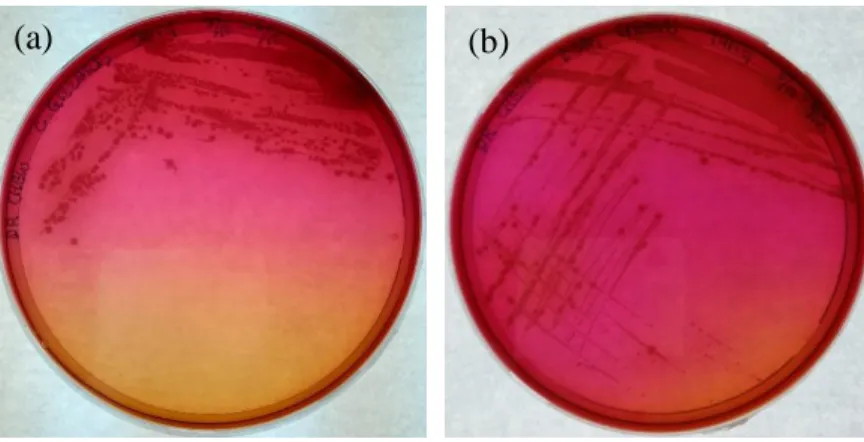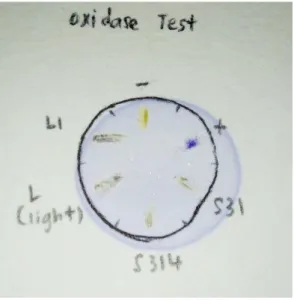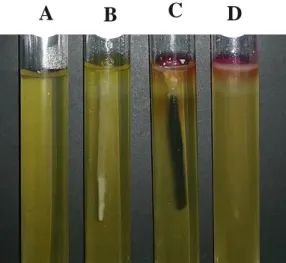PCR of antibiotic resistance genes showed that 83% (5/6) of the isolates carried the blaSHV gene, while none carried the ermA and ermC genes. 4.3 (c) Gram staining results of the positive control strain Bacillus cereus ATCC 11778 under 1000x light microscope magnification. 4.3 (d) Gram staining results of negative control strain Pseudomonas aeruginosa ATCC 27853 under 1000x light microscope magnification.
Background Information
As such, the emergence of listeriosis has become a major concern as over the decades of the 20th century, the aging of the population has increased due to the improvement of medicine and the number of immunocompromised individuals has increased due to cancer and diseases (Lungu, et al., 2011 ). Today, the spread of bacterial resistance to a wide range of antibiotics has become a threat to global health and development as it has led to a lack of new and effective antibiotics to treat disease (Mölstad, et al., 2017). In detail, longer incubation times are associated with pregnancy cases (median 27.5 days), followed by central nervous system infections (median 9 days), sepsis (median 2 days), and febrile gastrointestinal disorders (median 24 hours) (Goulet , et al., 2013).
Worldwide Incidence of Listeriosis
Replication of this organism in the host cell cytosol causes a change in the morphology of the host cell organelles and alters their function to promote infection (Radoshevich and Cossart, 2018). 7 foodborne diseases In the US and France, 19% and 17% of foodborne disease deaths, respectively, are caused by L. In European countries, despite a low incidence of 0.4 cases per 100,000, invasive listeriosis population has become a major public health concern due to high rates of hospitalization (90%) and mortality (20–30%) (Pontello et al., 2012).
Foodborne L monocytogenes and Its Source in the Food Environment L. monocytogenes is widely distributed in the natural environment and it can be
In the United States, more than 2 million cases of antibiotic-resistant bacterial infection occur annually, with 23,000 reported deaths (Blair, et al., 2015). Consequently, this reduces clinical efficacy with increasing treatment costs and mortality (von Wintersdorff, et al., 2016). After ingestion, the bacteria can transfer their resistance genes to each other (Verraes, et al., 2013).
Antimicrobial Resistance Mechanisms of L. monocytogenes
13 Figure 2.1: Simplified schematic overview of the flow of resistant bacteria and resistance genes in the food chain (Bengtsson-Palme, 2017). Another pump, called Lde, on the other hand, contributes to tolerance with fluoroquinolones and DNA intercalating agents (Godreuil, et al., 2003). This pump belongs to the ABC multidrug resistance transporter family and confers resistance to nisin, bacitracin and β-lactam antimicrobials such as ampicillin, cephalosporins and oxacillin (Collins, et al., 2010).
Another food source serving as a potential vehicle later in 2005 was the dairy farm environment, where Srinivasan et al. The isolates were all susceptible to most antibiotics, including ampicillin, penicillin, erythromycin, gentamicin, trimethoprim, and chloramphenicol. All the isolates were susceptible to penicillin G or tetracycline, but a single isolate that was resistant to erythromycin harbored the ermB gene.
From these findings, it can be concluded that there are many differences in the antimicrobial profiles of L.
Materials and Equipment
Chemical Reagents and Manufacturers Refer to appendix A
Labware, Equipment and Instrument Refer to appendix B
Food Samples
Preparation of Culture Medium and Agar
Powdered media were suspended in deionized water and stirred to mix well until complete dissolution. An amount of 25±1 g of the food sample was weighed and added to 100 ml of Listeria primary enrichment broth, UVM I in a conical flask covered with aluminum foil. Conical flasks containing UVM I and food sample were stirred at 200 rpm at room temperature overnight.
One milliliter of the primary enrichment culture was pipetted into 9 ml of Listeria secondary enrichment broth, UVM II in a universal bottle and then stirred at 200 rpm at room temperature overnight. The secondary enrichment culture was then plated on PALCAM selective Listeria agar and incubated at room temperature for about 48 hours (Fallah, Saei-Dehkordi and Mahzounieh, 2013). Bacterial colonies were streaked with putative colonies (grey-green colonies surrounded by black halo) until uniform colony morphologies were obtained on a single plate.
Biochemical Characterization of Bacterial Isolates
Catalase Test
A small amount of suspected bacterial colony was transferred to a clean, dry slide using a sterile wooden stick. Rapid evolution of bubbles within 5 to 10 seconds would indicate a positive response from the specific bacterial strains. Using a sterile wooden stick, a piece of bacterial culture was scraped off and smeared onto the piece of filter paper soaked with BactiDrop™ Oxidase Reagent.
Sulfide-Indole-Motility (SIM) Test
Blood Agar Hemolysis and CAMP Test-S
F48 Microgen TM Listeria Latex Kit
Antibiotic Susceptibility Test (Kirby-Bauer Disk Diffusion)
Molecular Identification of Isolated Bacteria Strains and Their Antimicrobial Resistance
Total DNA Extraction for Isolated Strains
After the silica mini-column was placed back into the collection tubes, the tubes were sent for another round of centrifugation to remove any remaining ethanol.
Total DNA Extraction for blaSHV Control Strain
PCR of four types of genes: prs, erm A, erm C and blaSHV using gene-specific forward and reverse primers was performed. Positive and negative standard for each primer were included as controls in all PCR reactions. PCR amplification for each of the genes of interest was performed in a total of 25 µl reaction volume.
After completion of gel electrophoresis, the agarose gel was visualized using the Gel Imaging System by Bio-rad, a ChemiDoc XRS+ imaging system controlled by Image Lab software.
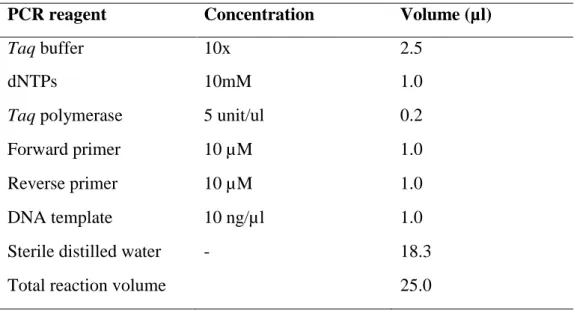
Isolation of Bacteria L. monocytogenes from Food Samples
Biochemical Characterization of Bacterial Isolates .1 Gram Staining
For (a) and (b), the isolated bacteria; (c) the positive control Bacillus cereus strain ATCC 11778; (d) The negative control Pseudomonas aeruginosa strain ATCC 27853. Upon addition of 3% (v/v) hydrogen peroxide, any catalase-positive bacteria would cause rapid bubble formation, as shown in Figure 4.4. Oxidase-positive bacteria will cause deep purple-blue discoloration on filter paper upon addition of oxidase reagent, while oxidase-negative bacteria will not show any color change.
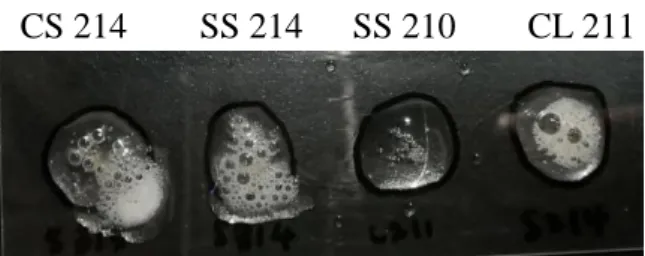
Antibiotic Susceptibility Test (Kirby-Bauer Disk Diffusion)
However, addition of latex reagent to all the bacteria colony samples did not show a positive result.
Molecular Identification of Isolated Bacteria Strains and Their Antimicrobial Resistance
Purity and Concentration of Extracted DNA
PCR Amplification Targeting prs, erm A, erm C and blaSHV
40 (Figure 4.11, lane 10) showed that the amplification was specific and that none of the bacterial isolates carried the targeted genes. On the other hand, detection of the blaSHV gene generated positive results for all six isolates. Bands with the expected amplicon size of 868 bp were observed from lane 3 to lane 7 in Figure 4.17.
43 Figure 4.13: Image of the blaSHV gene detection gel visualized by the Bio-Rad Gel Imaging System.
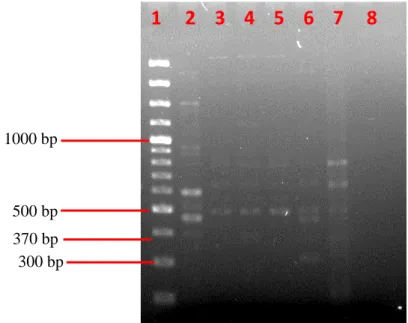
Aberrant Results of Presumptive L. monocytogenes in Biochemical Tests
Indole Test
Motility
Although flagella appear to play an important role in attachment to surfaces (Nowak, et al., 2017), several studies have encountered mutant strains of non-motile L. It has β-hemolytic properties (den Bakker, et al., 2010) ) but its hemolytic activity on blood agar can be detected very slowly or weakly reactive, that the zone of hemolysis does not extend much beyond the edge of the colony. Indeed, bacteria isolated from processed foods or natural sources have a higher probability of causing this nonhemolytic phenotype (Pusztahelyi, et al., 2016).
The hly gene, previously called hlyA and lis4, is the gene that codes for hemolysin. LLO belongs to the family of sulfhydryl-activated pore-forming cytolysins of which streptolysin 0 is the prototype. According to Potnoy et al., the most likely role for LLO was to mediate lysis of bacteria-containing host vacuoles.
The prfA gene acts as a positive regulatory factor for the hly gene when these mutants barely expressed detectable levels of hly mRNA. Furthermore, complementation of the spontaneous deletion mutant with a plasmid carrying prfA results in high expression of not only the hly genes but also other genes of L. This in some way proved the function of prfA as an activator. of other intracellular genes (Portnoy, et al., 1992).
F48 Microgen™ Listeria Latex Kit
No agglutination was observed from any sample in this latex agglutination test because this test itself has the limitation that culture grown above 30 °C cannot produce flagella, giving a false negative result. Likewise, as mentioned in the motility assay, there is a possibility that the isolates are non-motile strains lacking ActA proteins (Yoshikawa, et al., 2009).
Absence of prs gene for Listeria spp
They coat latex particles and cause agglutination when mixed with suspension of Listeria spp. The analyzed gel image as shown in figure 4.10 proved that the prs gene was absent from the six suspected L. Nevertheless, this may be due to the lack of PCR optimization as the reagents used in the amplification are different from the referenced study by Doumith et al. .
Specificity of Listeria Selective PALCAM Agar
However, Angelidis, Kalamaki and Georgiadou showed that other types of bacteria can also grow on PALCAM agar and hydrolyze esculin. Among the list, Cellulosimicrobium funkei and Marinilactibacillus psychrotolerans presented quite similar morphology to Listeria spp. Cultures of these bacteria on PALCAM agar from the study are shown in Figure 5.1.
It was the second species identified and was reported to be mobile and able to hydrolyze esculin (Brown, et al., 2006). The presence of this bacterium has been reported in foods, especially cheeses (Angelidis, Kalamaki and Georgiadou, 2015).
Antibiotic Susceptibility Test
Detection of Antibiotic Resistant Genes: ermA, ermC and blaSHV Antibiotic susceptibility test of the six strains showed resistance towards
54 According to research by Haubert et al. successfully isolated and detected 10% (five isolates) of multidrug-resistant L. Five strains of bacterial isolates were detected with the presence of blaSHV by PCR amplification, except for sample LL2213, as shown in Figure 4.13. In this study, detection of blaSHV genes by PCR amplification demonstrated that they may contribute to ampicillin resistance.
Improvement and Future Studies
A review of Listeria monocytogenes: An update on outbreaks, virulence, dose-response, ecology and risk assessments. Antibiotic resistance of Listeria monocytogenes isolated from meat processing environments, beef products and clinical cases in Brazil. Isolation and characterization of Listeria monocytogenes in Chinese food obtained from the central area of China.
Antimicrobial resistance profiles of Listeria monocytogenes and Listeria innocua isolated from ready-to-eat products of animal origin in Spain. Occurrence and antibiotic resistance profiles of Listeria monocytogenes isolated from seafood and market and processing environments in Iran. Prevalence and quantity of Listeria monocytogenes in chicken offal at the retail level in Malaysia.
Antimicrobial resistance of Listeria monocytogenes and Salmonella Enteritidis isolated from vegetable farms and retail markets in Malaysia. Antimicrobial resistance profiles of Listeria monocytogenes isolated from ready-to-eat products in Poland in 2007–. MPN-PCR detection and antimicrobial resistance of Listeria monocytogenes isolated from raw and ready-to-eat foods in Malaysia.
Characterization of Listeria monocytogenes from three countries and antibiotic resistance differences between countries and Listeria monocytogenes serogroups. Prevalence, antimicrobial resistance and genetic diversity of Listeria monocytogenes isolated from chilled pork in Nanjing, China. Phenotypic and genotypic analysis of antimicrobial resistance among Listeria monocytogenes isolated from Australian food production chains.
